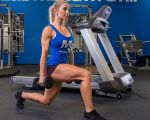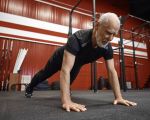- Importance of Weight Training for Women
- Getting Started with Weight Training
- Effective Workouts for Women
- Overcoming Common Weight Training Challenges
- Nutrition and Recovery for Strength Training
1. Importance of Weight Training for Women
Weight training is often associated with men, but it is equally important for women, offering a host of benefits that go beyond just building muscle. In fact, weight training is essential for women’s overall health, and its importance is gaining more recognition each year. In 2025, weight training is no longer just a tool for bodybuilders; it’s an important component of any fitness routine for women seeking to build strength, improve bone health, and maintain a healthy metabolism.
For women, weight training can lead to improved bone density, which is crucial as we age. As women are more prone to osteoporosis, strength training helps in building and maintaining strong bones, thus reducing the risk of fractures. Moreover, weight training is highly effective for fat loss because it increases muscle mass, which in turn raises the metabolic rate. The more muscle you have, the more calories your body burns, even at rest.
Additionally, weight training has profound effects on mental health. Studies show that lifting weights can reduce symptoms of anxiety and depression, improve self-esteem, and boost confidence. It’s not just about getting stronger physically; it’s also about feeling empowered. At Fitness, we understand the value of incorporating strength training into your routine, offering personalized programs and resources tailored to your needs.
2. Getting Started with Weight Training
Starting a weight training routine can seem intimidating, especially if you’re new to strength training. However, with the right approach, anyone can begin building strength and see significant improvements in their overall fitness. Here are some key tips to help you get started:
2.1 Start with Bodyweight Exercises
If you’re new to weight training, it’s best to start with bodyweight exercises to build a foundation before progressing to weights. Exercises like squats, lunges, push-ups, and planks will help strengthen your muscles and improve your form. As your body becomes accustomed to these movements, you can gradually increase the intensity by adding weights.
2.2 Focus on Form, Not Weight
When starting out, it’s crucial to focus on mastering proper form before increasing the amount of weight you lift. Using improper form can lead to injury and hinder your progress. Take the time to learn the correct techniques for each exercise, and always prioritize form over the amount of weight you’re lifting. A personal trainer or instructional videos can be a great resource for this.
2.3 Set Realistic Goals
It’s important to set realistic, achievable goals as you begin your weight training journey. Whether it’s lifting a certain weight, achieving a specific number of reps, or completing a workout routine consistently, setting clear goals will help keep you motivated. Remember that progress takes time, so be patient with yourself and celebrate small victories along the way.
3. Effective Workouts for Women
There are many different types of weight training exercises you can incorporate into your workout routine, each targeting different muscle groups. Below are some effective weight training workouts specifically designed for women to build strength and enhance fitness:
3.1 Full-Body Workouts
Full-body workouts are an excellent way for women to target all the major muscle groups in one session. These workouts typically include exercises like squats, deadlifts, chest presses, rows, and shoulder presses. Full-body workouts allow for a balanced approach to strength training and can be performed two to three times per week, depending on your fitness goals. They’re also ideal for women looking to improve overall muscle tone, boost metabolism, and increase strength across the board.
3.2 Upper Body Strength Training
Building upper body strength is crucial for maintaining posture, reducing back pain, and improving daily functional movements. Focus on exercises like push-ups, chest presses, rows, and tricep dips to target the arms, shoulders, and chest. Incorporating these exercises into your routine will help you develop lean muscle, improve your upper body strength, and boost confidence in your physical capabilities.
3.3 Lower Body Workouts
Strong legs and glutes are essential for everyday movements such as walking, climbing stairs, and lifting objects. Lower body strength training exercises, such as squats, lunges, and deadlifts, are great for targeting the legs and glutes. These exercises can also help you achieve a more sculpted physique and improve your overall athletic performance. Make sure to include a variety of movements to target different parts of the legs, including hamstrings, quads, and calves.
4. Overcoming Common Weight Training Challenges
While weight training has many benefits, it can come with its own set of challenges. Here’s how to overcome some of the most common obstacles women face when starting or maintaining a weight training routine:
4.1 Overcoming Fear of Bulking Up
One common misconception is that lifting weights will cause women to become overly bulky or masculine. However, this is simply not true. Women typically have lower levels of testosterone, the hormone responsible for muscle growth, than men. As a result, weight training for women primarily helps in building lean muscle and improving strength without adding excessive bulk. The key is to focus on reps and sets that align with your goals and body type.
4.2 Staying Consistent
Consistency is key when it comes to weight training. It can be difficult to stay motivated at times, but setting a workout schedule and sticking to it will help you make steady progress. It’s also important to mix up your routine to prevent boredom and challenge your muscles in different ways. Try incorporating new exercises, adjusting the number of sets or reps, or varying your rest periods to keep things interesting.
4.3 Managing Muscle Soreness
Post-workout soreness is common, especially when you’re just starting out with weight training. However, it’s important to differentiate between regular soreness (DOMS) and injury. If the soreness is mild, you can manage it with rest, hydration, and light stretching. If it’s more severe, consider consulting a healthcare professional or trainer to ensure proper form and technique.
5. Nutrition and Recovery for Strength Training
Proper nutrition and recovery are just as important as your workouts when it comes to building strength and achieving fitness goals. Here’s what you need to know about fueling your body and recovering after weight training:
5.1 Fuel Your Body with Protein
Protein is essential for muscle repair and growth. After weight training, your muscles need protein to recover and rebuild. Aim for a source of lean protein, such as chicken, fish, tofu, or legumes, within 30 minutes to an hour of completing your workout. A balanced diet with adequate protein will support muscle growth and help prevent injuries.
5.2 Stay Hydrated
Hydration is key for muscle recovery and overall performance. Dehydration can lead to fatigue, muscle cramps, and poor performance in your workouts. Drink plenty of water before, during, and after your weight training sessions to keep your body hydrated and functioning optimally.
5.3 Get Adequate Rest
Rest and recovery are essential for muscle growth. It’s during rest that your muscles rebuild and become stronger. Make sure to schedule enough rest between weight training sessions, especially for the same muscle groups. Aim for 7-9 hours of sleep each night to allow your body to recover and perform at its best.
For more information on weight training or personalized fitness plans, visit Fitness for expert advice, products, and services designed to help you reach your fitness goals.








